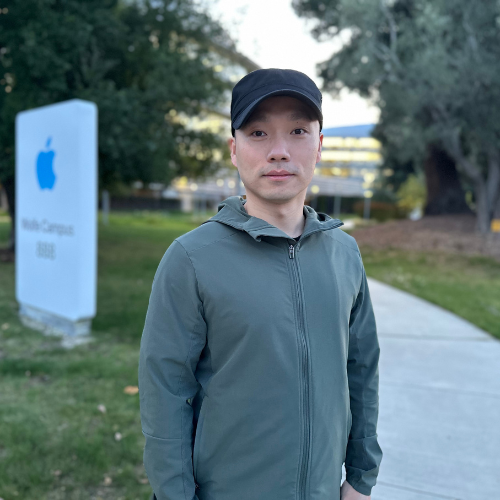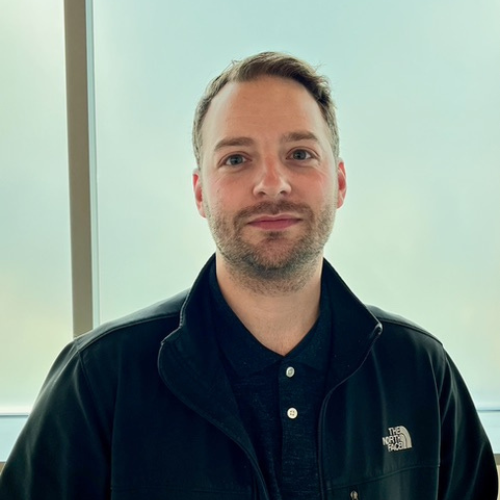BLOOMINGTON, Ill. — The Apple Vision Pro is arguably the hottest new device in the tech world, and two Illinois Wesleyan University physics alumni played a role in the creation of optical systems for the spatial computing headset.
Released on Feb. 2, 2024, the Apple Vision Pro is worn over the eyes and provides a range of features by overlaying digital information onto the real world through the headset lens. Using voice commands and gestures, users can pull up directions while walking, communicate through messages and video calls, watch videos or experience full virtual reality content, all without using their phone. Early reviews of the product call it “a bridge to the future.”

Qing Ding ‘13 started working at Apple in 2019 as a camera system engineer after completing his PhD in nano-photonics. Joseph Richards ‘16 was working for the research and development company Boeing Phantom Works when Apple contacted him in 2022 about an open position involving optical and sensing systems for the upcoming Vision Pro.

“My role has been to transition the cameras and illuminators from individual cameras and LEDs to integrated products,” said Richards. “These subsystems need to be well-qualified to function reliably and be manufacturable at mass production scale.”
Ding works on a team that delivered customized cameras for the highly integrated hardware system, examining the image quality of cameras along the production line.
“Many talented people within the company have dedicated their best efforts, regardless of the unknown in making a first-of-its-kind product,” said Ding.
While certain components of the Apple Vision Pro have been in the market for some time, Richards said combining so many technologies into a single product is distinctive.
“The level of detail and effort spent on each aspect of this system is remarkable,” said Richards. “The product is very likely the most advanced piece of consumer-available hardware to date.”
Qing said his time studying physics at IWU laid the foundation of knowledge that led him to work in his current position.
“I will never forget the nights and days as an undergraduate spent in the basement level of CNS working on course work and experiments. It was pure, undistracted intention of learning and growing and I learned from some of the best professors that I could get,” he said.
In his experience, Richards said the physics curriculum at IWU encourages broad investigation of interests and exposes students to hands-on laboratory exercises. As a student, Richards gravitated toward the research interests of Charles and Joyce Eichhorn Ames Professor of Physics Gabe Spalding, especially his focus in wave-phenomena, where Richards was able to observe and participate in Spalding’s experiments of super-luminal scattering events.
“Dr. Spalding simulated the requirements for detection, designed experiments for capturing the event, and — possibly most importantly — identified peers in the scientific community that could assist in the effort. The experience left me with a better understanding of the preparation, cooperation and effort required to accomplish innovative research,” said Richards.
Spalding applauds the skills and professional development of Ding and Richards that led to their contributions to such an advanced piece of technology. He noted that the tagline for the Apple Vision Pro is, “Welcome to the era of spatial computing.”
“At Illinois Wesleyan University, we are serious about moving forward with such work,” said Spalding, who also serves as program chair and President Elect for the American Association of Physics Teachers. “This summer, IWU will host faculty and staff from other institutions at a special workshop on programmable optical systems. There is much more work planned, which will impact curricula at many colleges and universities. Apple Computer, of course, is in a position to have an enormous impact on what happens next. Welcome to the era of spatial computing.”